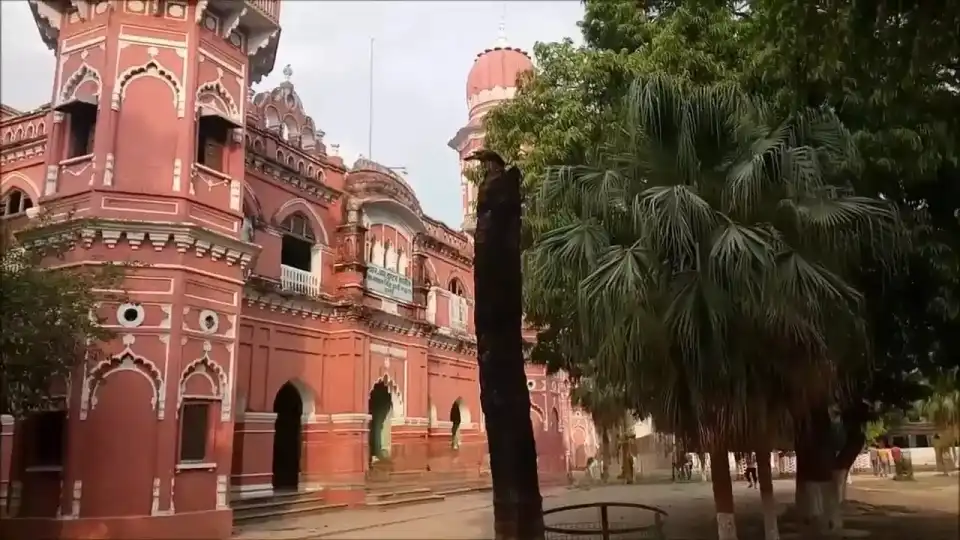Discovering Hardoi: A Comprehensive Guide
Introduction
Hardoi, a prominent district in Uttar Pradesh, India, offers a rich tapestry of history, culture, and natural beauty. Nestled in the heart of the state, Hardoi is a destination that embodies the essence of traditional Indian heritage while embracing modernity. In this article, we delve deep into the various facets of Hardoi, from its demographic diversity to its historical significance, and from its vibrant culture to its administrative structure.
Demography
Hardoi district, as per the 2011 Census, is home to approximately 4 million people, making it one of the densely populated regions of Uttar Pradesh. The population is a blend of various communities and ethnic groups, reflecting a harmonious coexistence. The literacy rate stands at around 68%, with a balanced gender ratio. The majority of the population engages in agriculture, which remains the primary occupation.
Population Breakdown
- Total Population: 4,092,845
- Male Population: 2,190,467
- Female Population: 1,902,378
- Literacy Rate: 68.89%
- Urban Population: 11.67%
- Rural Population: 88.33%
Geography
Hardoi is strategically located between the Ganges and Gomti rivers, providing fertile lands ideal for agriculture. The district covers an area of 5,947 square kilometers and features a mix of plains and low-lying areas, which contribute to its agricultural productivity.
Geographical Highlights
- Area: 5,947 sq. km
- Major Rivers: Ganges, Gomti
- Topography: Plains with fertile soil
- Climate: Subtropical with hot summers and mild winters
Historical Significance
Hardoi has a rich historical background, with its roots tracing back to ancient times. It finds mention in various historical texts and was a significant region during the medieval period under the rule of the Mughals and later the British. The district has seen numerous battles and has been a witness to the changing dynamics of Indian history.
Key Historical Events
- Ancient Period: Mentioned in Vedic texts
- Medieval Period: Influenced by Mughal architecture and culture
- British Era: Significant during the Indian independence movement
Culture
The culture of Hardoi is a vibrant blend of traditional and modern elements. The district celebrates a myriad of festivals, with Holi, Diwali, Eid, and Dussehra being the most prominent. The local art forms, including folk dances and music, add to the cultural richness of the region.
Festivals and Traditions
- Holi: The festival of colors, celebrated with great fervor
- Diwali: Festival of lights, marked by lighting lamps and fireworks
- Eid: Celebrated by the Muslim community with prayers and feasts
- Dussehra: Symbolizes the victory of good over evil, marked by plays and processions
Cuisine
The cuisine of Hardoi is a delightful experience for the taste buds, with a range of dishes that reflect the local flavors and ingredients. The food here is predominantly vegetarian, with a significant influence of Mughal culinary traditions.
Popular Dishes
- Puri-Sabzi: A traditional breakfast dish
- Biryani: A Mughal-influenced rice dish
- Kebabs: Grilled meat delicacies
- Litti-Chokha: A regional specialty made of wheat and roasted vegetables
Administration
The administrative structure of Hardoi is well-organized, with the district divided into several tehsils and blocks for efficient governance. The district administration is headed by the District Magistrate, who oversees the implementation of government policies and development programs.
Administrative Divisions
- Tehsils: Hardoi, Shahabad, Sawayajpur, Sandila, Bilgram, and others
- Blocks: 19 blocks including Atrauli, Bawan, Bharawan, Kachhauna
- Municipalities: 7 municipalities
- Panchayats: Numerous village panchayats for local governance
Education
Education in Hardoi has seen significant improvements over the years, with numerous schools and colleges providing quality education. The district hosts a mix of government and private educational institutions, catering to the diverse needs of the population.
Educational Institutions
- Primary Schools: Over 2,000
- Secondary Schools: Around 500
- Colleges: Including notable institutions like the Ram Sewak Yadav Inter College
- Technical Institutes: ITI Hardoi, providing vocational training
Economy
The economy of Hardoi is primarily agrarian, with agriculture being the backbone. The district also has a burgeoning small-scale industrial sector, contributing to its economic growth.
Economic Activities
- Agriculture: Main crops include wheat, rice, and sugarcane
- Industries: Small-scale industries including textile, pottery, and food processing
- Trade: Local markets play a crucial role in the trade of agricultural produce
Tourism
Hardoi offers a range of tourist attractions, from historical sites to natural beauty. The district is home to several ancient temples, forts, and scenic spots that attract visitors from far and wide.
Major Tourist Attractions
- Sankat Mochan Temple: A revered religious site
- Bilgram Fort: A historical fort with significant heritage value
- Sandi Bird Sanctuary: A haven for bird watchers
- Kachhauna Nature Reserve: Ideal for nature enthusiasts
Conclusion
Hardoi, with its rich history, vibrant culture, and economic potential, stands as a testament to the diverse and dynamic nature of Uttar Pradesh. Whether you're exploring its historical landmarks, indulging in local cuisine, or experiencing its cultural festivals, Hardoi offers something for everyone. This comprehensive guide provides a detailed look into the district, ensuring that every aspect of Hardoi is highlighted and celebrated.
Suggested Diagram
By exploring Hardoi through these various dimensions, one can truly appreciate the depth and richness of this remarkable district.
